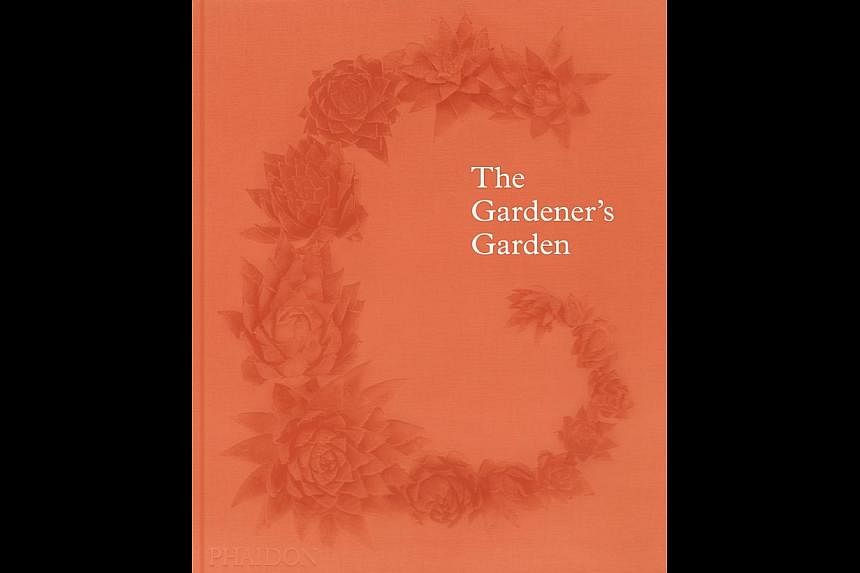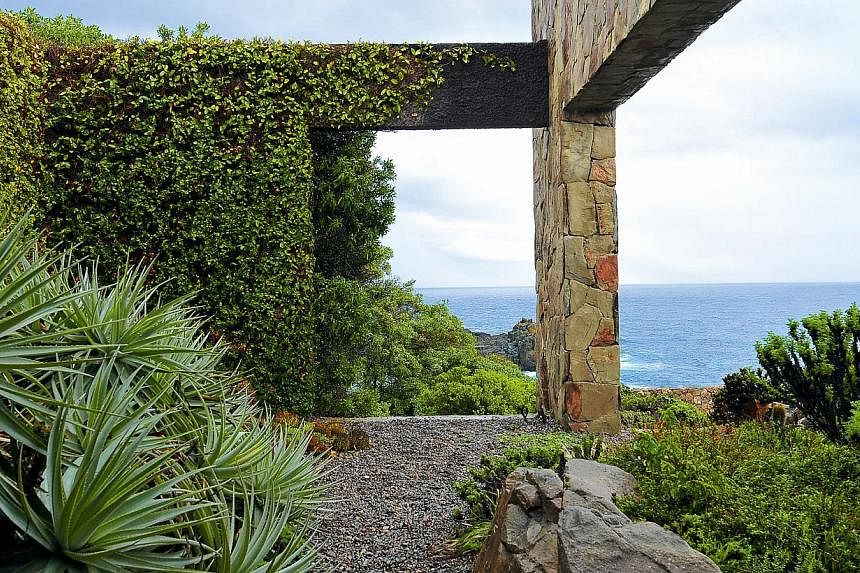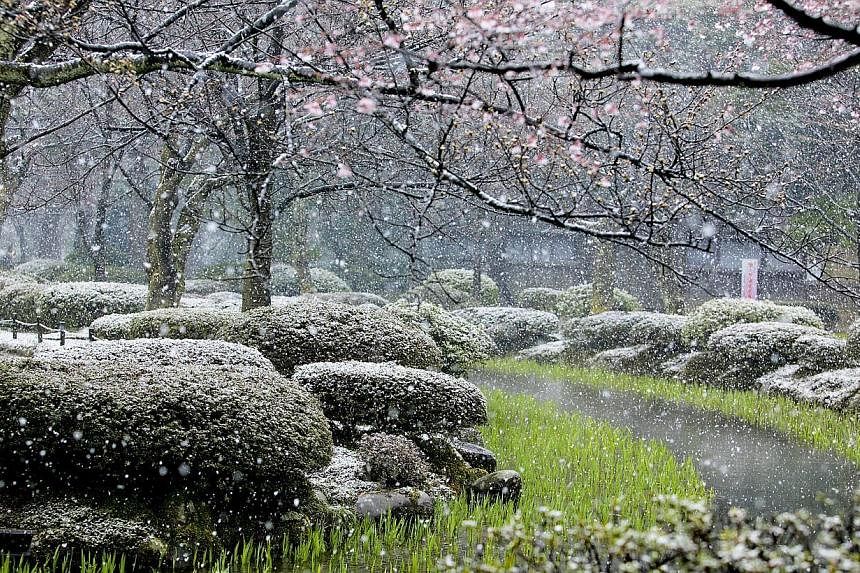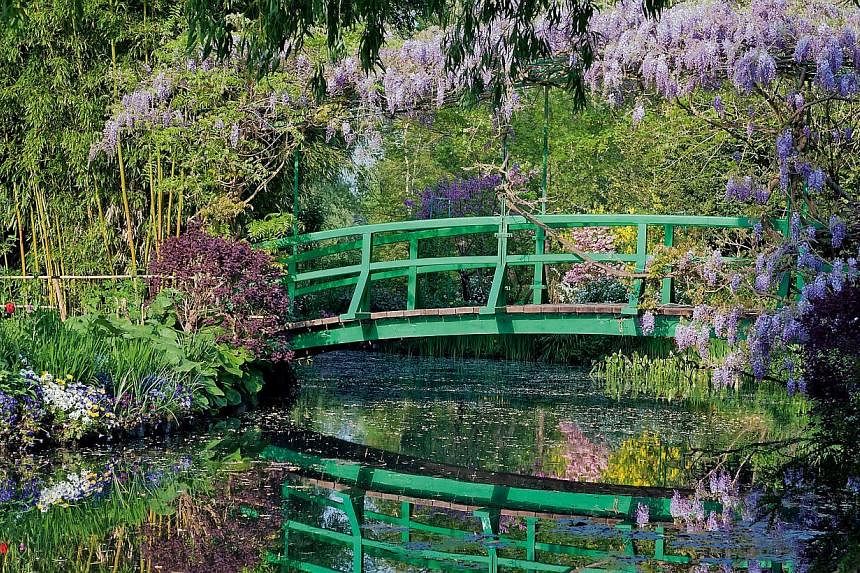Garden enthusiasts who travel the world to admire lush greenery may be stopped in their tracks by a new book that pays tribute to the most beautiful gardens in the world.
The Gardener's Garden, a 480-page hardcover tome by Phaidon Press, highlights more than 250 gardens around the world in 1,200 pictures.
The featured gardens are designed in a plethora of styles and come from places of different climates.
The span of time that the book covers makes it a history lesson of sorts too. It includes gardens from as early as the 14th century and as recent as 2009, when the urban greenscape, the High Line, opened in New York City.
Readers will delight in the unique selection as well, which includes Saiho-ji, a serene moss garden in Japan. Singapore's Gardens by the Bay, with its soaring artificial vertical gardens, dubbed Supertrees, also makes the cut.
The book's editor, Ms Victoria Clarke, tells Life! that more than 1,000 gardens were considered before the final number were picked to demonstrate the evolution of gardens.
The London-based editor says: "The gardens are exemplary of their style and type and were carefully selected not only for their look and design, but also for their planting and horticultural uniqueness. The selection includes national iconic gardens alongside less known and contemporary masterpieces for each region."
The choices also showcase illustrious gardeners through the years, including American garden designer Madison Cox, who designed the paradisaical Ain Kassimou garden in Morocco.
The selection was made by an international group of experts, including English garden and landscape designer Dan Pearson and renowned tropical garden designer Made Wijaya from Bali.
The profile of each garden comes with multiple photographs and a short write-up by a leading garden and horticultural expert on how it was designed.
Ms Clarke says amateur gardeners can also glean tips on how to decorate their own plot by studying the way professionals did their projects - such as Australian designer Fiona Brockhoff, who made her garden resemble the outback.
Ms Clarke says: "Throughout the book, there are ideas for different planting combinations or styles of garden, as well as for seasonal planting."
But what makes the book truly stand out is perhaps its stunning pictures of the gorgeous gardens, from both close-up and afar.
Ms Clarke says: "It's a visual tour de force."
The Gardener's Garden (£49.95/S$103.05, Phaidon 2014) is available from www.phaidon.com
GIVERNY
Where: Upper Normandy, France
This garden is famous for being immortalised in painting by renowned French Impressionist painter Claude Monet.
A chance ride past the charming French village of Giverny, 80km outside Paris, drew him to set up home there in 1883 with his second wife Alice Hoschede and their eight children.
Initially, he rented a place that had a barn which he used as a painting studio.
A few years later, he bought the house and garden and became involved in the design of the landscape. He drew its layout and gave instructions to gardeners.
A highlight of the garden is its ponds filled with water lilies from South America and Egypt as well as those that grow locally. The flowers became the subject of some of Monet's best-known paintings, bringing Giverny global attention.
After Monet died in 1926, the property gradually fell into ruin, but it was later restored through donations.
KENROKU-EN
Where: Kanazawa, Ishikawa, Japan
This former private garden was named Kenroku-en, or Garden of the Six Sublimities, for its spaciousness, seclusion, artificiality, antiquity, abundant water and broad views. These attributes, steeped in Chinese landscape theory, are said to make up the perfect garden.
Kenroku-en dates back to the 1620s, when it was developed by the Maeda family, one of the country's most powerful and wealthy families.
However, the garden on the west coast of Japan was razed to the ground by a fire in 1759. It was rebuilt in 1774 by a feudal lord, who added features such as the Emerald Waterfall and a teahouse. The additions continued through the years and the garden has been opened to the public since 1874.
Visitors to the garden, about four hours by train from Tokyo, can spend an entire day in the dreamy grounds where 8,750 trees grow, snapping pictures of ponds, waterfalls, bridges and teahouses.
CHATEAU DE VILLANDRY
Where: Loire Valley, Centre, France
This Renaissance chateau, 240km out of Paris, is built near Loire, France's longest river, and on a plot of land that changed ownership many times throughout history, gradually falling into disrepair.
It was only in 1906, after a young Spanish doctor Joachim Carvallo and his American wife Ann Coleman bought over the castle, that the garden was restored to its glory days. It is now a Unesco World Heritage Site.
The property features various garden styles such as a water garden, herb garden and two ornamental gardens; one, the Garden of Love, has heart-shaped topiaries and red-coloured plants, while the other, the Garden of Music, has topiaries shaped like musical motifs. There is also a potager, where more than 40 types of vegetables are grown.
JARDIN LOS VILOS
Where: Coquimbo, Chile
This garden in the coastal city of Los Vilos sits in the home of awardwinning Chilean landscape architect Juan Grimm.
The 5,000 sq m plot of land overlooks the Pacific Ocean and Grimm took advantage of the spectacular view to keep the design of the house, which he did himself, simple and rustic.
He chose not to install a modern irrigation system so he grows succulents, twisted Monterey cypress trees and vertical cactuses, which are suited to the climate and grow well on their own.
SCHLOSS SCHWETZINGEN
Where: Schwetzingen, Baden-Wurttemberg, Germany
This sprawling garden in south-west Germany is part of a chateau built by Prince-Elector Karl Theodor, a highranking official in the 18th century who used the grounds as a summer getaway.
Its first gardener Johann Ludwig Petri gave it a circular layout, while French builder Nicolas de Pigage added an orangery - a conservatory-like residence, and a small temple devoted to Apollo, the ancient Greek god of light and the arts. One of de Pigage's most stunning additions is a decorative mosque, which reflected the popularity of Middle Eastern culture at that time.
The symmetrical garden, with its beautiful flowerbeds, hedges and fountains, purportedly inspired French philosopher Voltaire to write one of the world's greatest satires, Candide, during his stay there.







